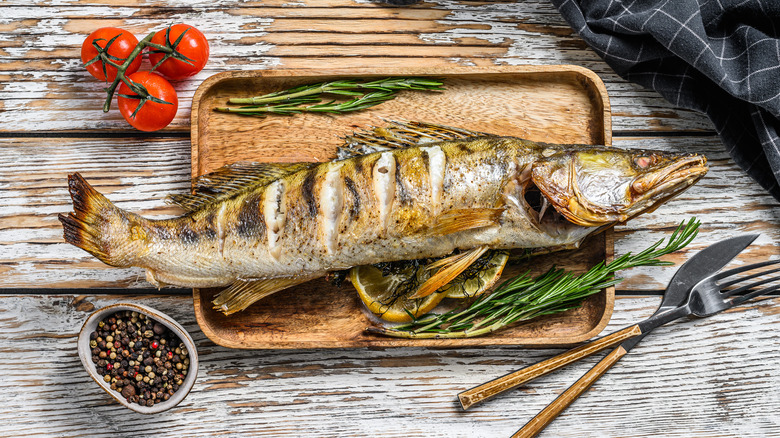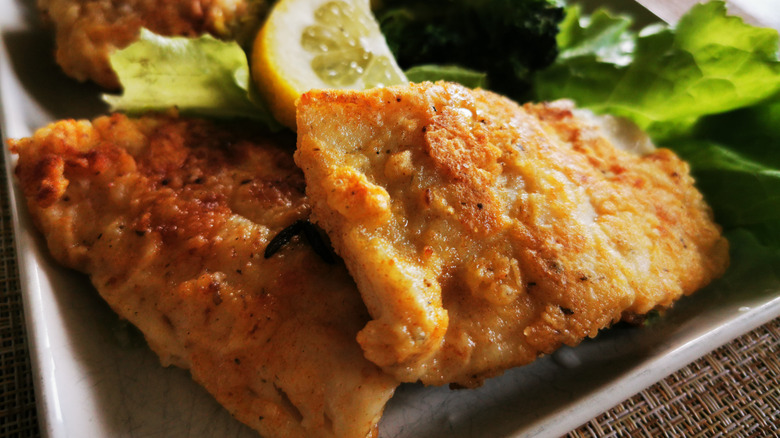Can You Eat The Fish You Catch In The Great Lakes?
Anglers from all over the country revel in the opportunity to nourish themselves with the bounties earned through their excursions. In many areas, the freshwater fish from lakes and streams are good eats, but in certain regions, there is a need for caution. The Great Lakes are a prime example. Pollution has plagued these waters for years, forcing some anglers to second-guess whether or not they want to toss their trophies back.
Overall, most folks can safely consume fish caught from the Great Lakes. However, many jurisdictions recommend limiting the consumption of animals caught in these waters because of contaminants they may carry inside them, such as mercury and perfluoroalkyl and polyfluoroalkyl substances (PFAS). Most consider at least a modest amount to be okay — usually between one helping per week to one per month. The number is less for children and pregnant people, but the exact amount deemed okay to eat depends on which authority you ask and even which lake you're fishing from. State agencies, such as Wisconsin's Department of Natural Resources, regularly monitor fish populations and issue consumption guidelines.
When fish are caught to be consumed, there are some common recommendations regarding how to prepare them in the interest of safety best practices. The head, skin, and organs should be discarded, while trimming away fat can eliminate up to half of the contaminants the fish may be carrying. Younger ones are generally considered better choices because they have had less time to accumulate potentially dangerous chemicals.
Fish from the Great Lakes are sought-after treats
In some states surrounding the Great Lakes, fresh local seafood is a heralded menu item, especially for those looking for protein while not eating meat during Lent. One specific species boasting an abundant population in Lake Erie is especially sought after: walleye. These predators are both toothy and toothsome, and anglers from all over the country take trips to the Great Lakes throughout the year hoping to take a bite of this flakey white treat. Walleye are often prepared with a light breading of flour — the key to impossibly crisp fish – before being pan-fried. They can also be baked, grilled, deep-fried, or put into a delicious soup.
Another commonly eaten fish from the Great Lakes is yellow perch. Because of their ample population, they are a go-to choice for a local fish fry. Like walleye, they are white and flakey with a mildly sweet flavor, and can be prepared in many different ways.
Of course, not everyone is confident in their ability to cook fish properly. Michigan has a solution for such folks called the Catch and Cook program. Once you have secured your meat, you can take it to a participating restaurant, and they will do the cooking for you. The only thing better than hauling in an impressive catch is having it expertly prepared by a chef with the know-how to skillfully season protein and tease out all the delightful flavors it can bring to the table.

